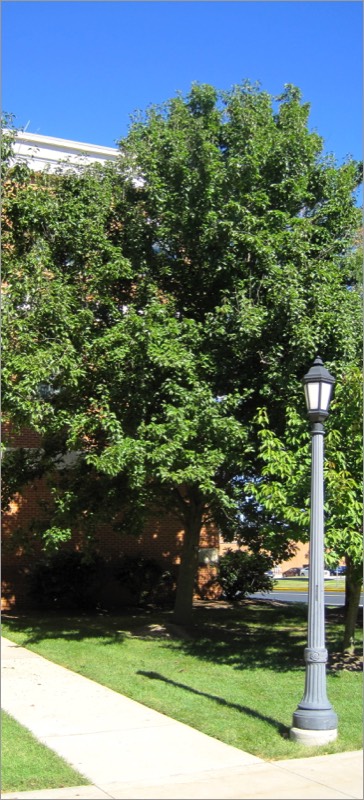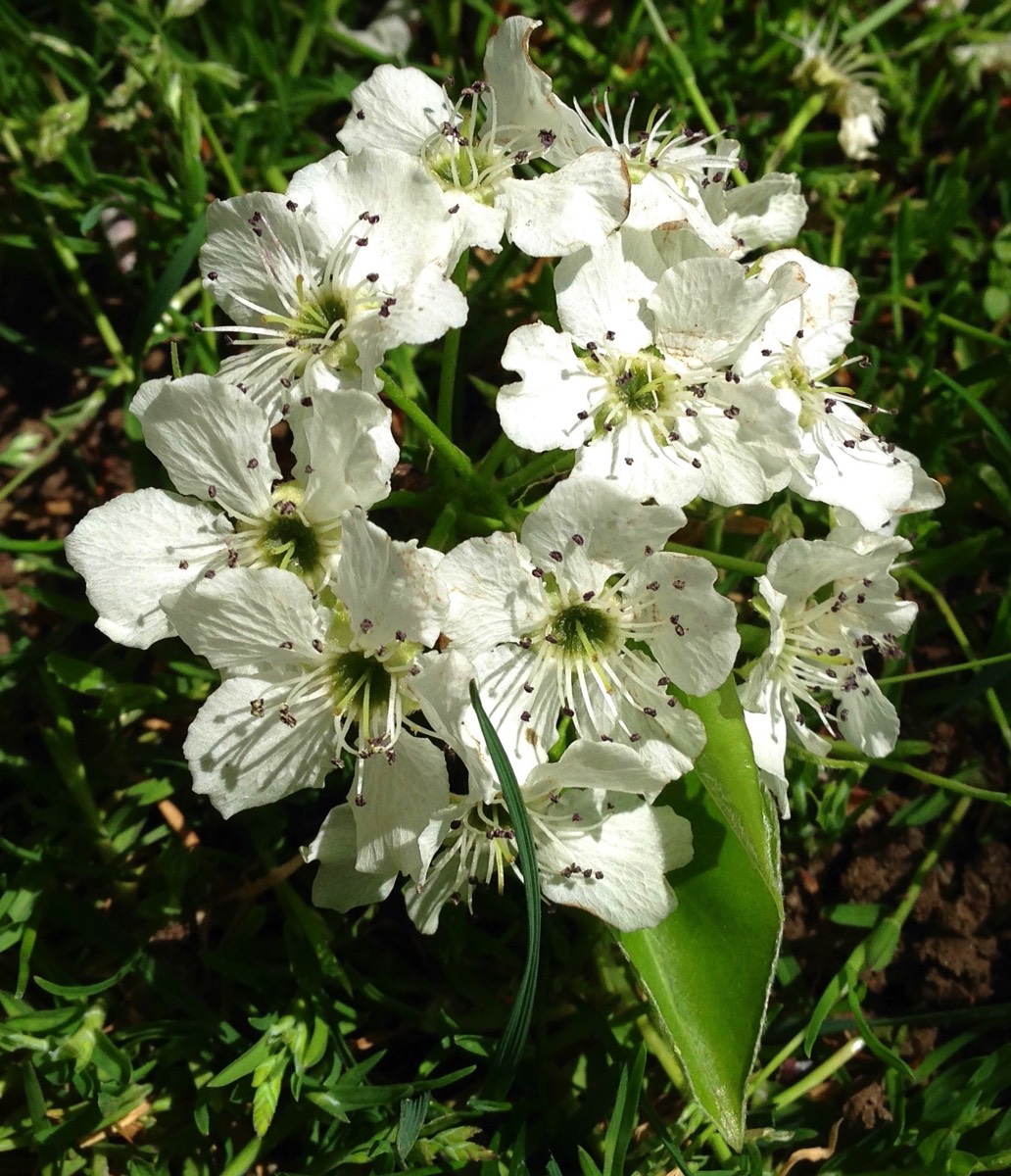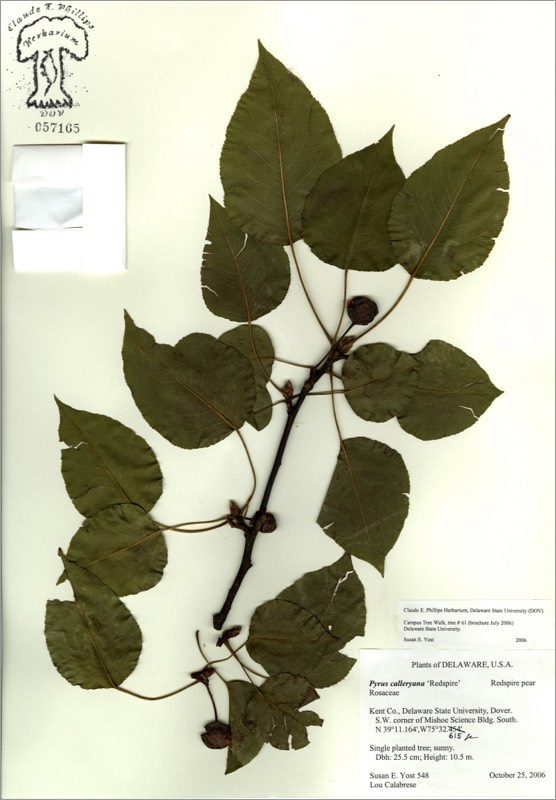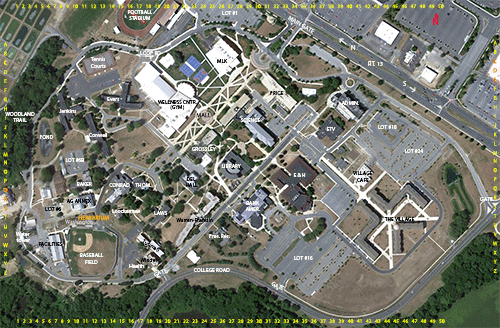*Redspire pear


*Pyrus calleryana ‘Redspire’
REDSPIRE PEAR
Rosaceae
Asia
Location: map coordinates L-31 (near southwest corner of Mishoe Science Center), N 39°11'9'' W 75°32'27''
Planting history: presently unknown.
Description:
*Non-native species (not native to Delaware). Species listed as Invasive in Delaware
REDSPIRE PEAR
Rosaceae
Asia
Location: map coordinates L-31 (near southwest corner of Mishoe Science Center), N 39°11'9'' W 75°32'27''
Planting history: presently unknown.
Description:
- medium-sized deciduous tree
- etymology: Pyrus = the Latin name; calleryana after A. Callery, French missionary, who collected the type specimen in China
- leaves simple, alternate
- flowers attractive; pure white, bloom in spring
- fruits small pomes (apple-like fruits), brownish
- tree shape narrower, and flowers larger, than the related cultivar Bradford pear (Pyrus calleryana ‘Bradford’)
- tolerant of urban conditions
- Pyrus calleryana is invasive; although originally self-sterile, different cultivars of Callery pear now cross-pollinate and set fertile seeds. First detected in Delaware >1946; now escaping to roadsides and fields in all 3 Delaware counties
*Non-native species (not native to Delaware). Species listed as Invasive in Delaware


HIT REFRESH TO START LOCATION GRAPHIC